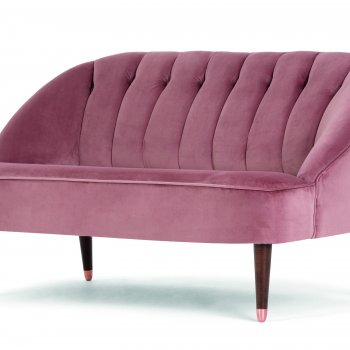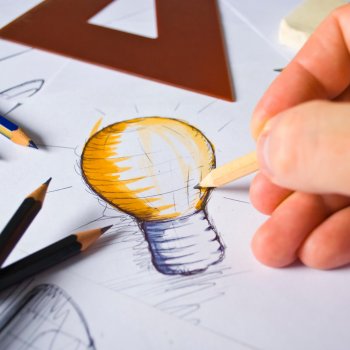
Designer views: Adrian and Jeremy Wright
1 June 2013 – London
English brothers Adrian and Jeremy Wright formed their design studio in 2005. They have worked with a variety of well-known international clients and their work has received numerous Red Dot and Design Plus awards. They have also just been named Product Designer of the Year 2013 by Homes & Gardens magazine. For more information about them, head to www.designwright.co.uk
Do you have a signature style and/or specific approach to your work?
We try to avoid adhering to a signature style, but we do have a certain approach. We both have engineering backgrounds, so our work is often characterised by an appreciation of both the visual and technical aspects of a product. Many of our ideas evolve out of an underlying technical solution.
What’s your favourite design object or product (excluding your own) and why?
There was a piece of furniture by Seongyong Lee which stood out a few years ago at the Royal College of Art degree show. It was a stool made from tubular plywood. It was ingenious on a technical level as the designer had used an existing material in a completely new way, but the execution was also exquisite.
Which trends do you think have an influence on design today?
Traditionally design, production and marketing were connected in a linear process, with one leading on to the next. Over the past few decades the relationship between marketing and production has been turned on its head with many of the traditional manufacturing companies now outsourcing their production, often to China. This frees the marketing departments from working within the limitations of their existing production processes and creates opportunities for brands to move into different product categories.
It will be interesting to see if crowd-funding sites such as kickstarter.com can have a similar effect on the relationship between design and marketing, where designers are no longer dependent on established brands to get their products to market.
Some people say “imitation is the highest form of flattery” – do you agree?
No. In our experience there are two types of imitations – the direct, unashamed copies (often unbranded) and the ‘inspired imitations’ which, while still being blatant rip-offs, are masquerading as original designs under an established brand. Both are frustrating because they bypass all the effort it takes to create something original, but especially the latter because the established brand can add undeserved credibility.
It is common practice for designers to look to a variety of sources for inspiration. Sometimes there is a fine line between inspiration and copying. How do you deal with this challenge?
When starting a new project we are always torn between researching an area to check we’re not duplicating something that already exists and avoiding research to ensure we come up with original thoughts. Our approach is to consciously look for inspiration off the beaten track at unrelated, and often undesigned objects.
Does IP have an effect on your work?
IP is an essential aspect of our work, but to be honest, we find IP law over-complicated and a bit of a minefield. A lot of our work is protected by registered designs and/or patents (as well as the unregistered rights) but we have found registered designs a particularly useful tool. Compared to patents, registering designs are relatively cheap and straight-forward, but still effective.
What’s your experience with the exploitation of design as IP?
Our whole business is based on generating IP, whether registered or unregistered. A lot of our work is royalty-based where we licence the IP to the client in return for a royalty on each product sold. Although it’s not essential to have registered IP protection for this model to work, it certainly makes it easier to protect the design against copies and therefore protect our future revenue.
Originally published in DesignWrites 1st Edition.








